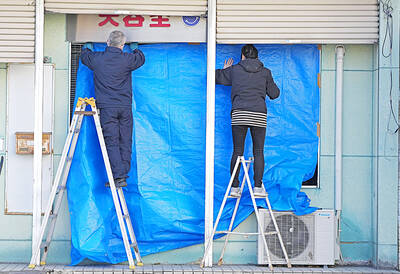Data published by the Environmental Protection Administration (EPA) suggest that the nation’s recycling rate last year was 58 percent, but the number is a gross overestimation, as millions of tonnes of trash and electronic waste disposed of by private waste collectors are not included in the government’s data, Taiwan Watch Institute secretary-general Herlin Hsieh (謝和霖) said yesterday.
Hsieh cited a report published last year in the Wall Street Journal titled “Taiwan: The World’s Geniuses of Garbage Disposal,” which praised Taiwan’s transformation from a “garbage island” to “an international poster child for recycling, boasting a recycling rate of 55 percent in 2015” — higher than the 35 percent rate in the US.
However, Taiwan’s seemingly impressive recycling rate conceals many hidden numbers, Hsieh said.
The nation’s environmental protection agencies reported that about 3 million tonnes of trash were incinerated last year, but its 24 trash incinerators received more than 4.2 million tonnes of trash, he said, adding that the gap between the two figures is widening.
The nation’s recycling rate is calculated by dividing the amount of recycled garbage by the total amount of garbage, but neither figure reflects reality, Hsieh said.
Trash disposed by informal and private collectors is not included in the total amount of garbage, yet the trash they recycle is included in the nation’s total recycling, Hsieh said, adding that because of this, the recycling rate seems high and appears to be rising.
Even worse, the organization found that some garbage collectors smuggled in electronic waste from other countries to benefit from recycling subsidies provided by the EPA, Hsieh said.
Members of the organization once went to a waste collector’s plant in Miaoli County and found more than 60,000 computer monitors piled up, he said, adding that the EPA could not even confirm the exact number of monitors.
“Figures are supposed to reflect reality, and identify and solve problems. They should be not used to embellish reality, cover up problems and pacify the public,” he said, adding that he was “warning” the EPA.
To improve its supervision of garbage collection and reduce the burden of cleaning, the government should consider launching a system of barcodes or quick-response codes that could be applied to reusable products, he said.
For instance, people should be offered drink cups for rent, for which they could pay using codes, just as they can rent public bicycles, he said.

Taiwanese were praised for their composure after a video filmed by Taiwanese tourists capturing the moment a magnitude 7.5 earthquake struck Japan’s Aomori Prefecture went viral on social media. The video shows a hotel room shaking violently amid Monday’s quake, with objects falling to the ground. Two Taiwanese began filming with their mobile phones, while two others held the sides of a TV to prevent it from falling. When the shaking stopped, the pair calmly took down the TV and laid it flat on a tatami mat, the video shows. The video also captured the group talking about the safety of their companions bathing

US climber Alex Honnold is to attempt to scale Taipei 101 without a rope and harness in a live Netflix special on Jan. 24, the streaming platform announced on Wednesday. Accounting for the time difference, the two-hour broadcast of Honnold’s climb, called Skyscraper Live, is to air on Jan. 23 in the US, Netflix said in a statement. Honnold, 40, was the first person ever to free solo climb the 900m El Capitan rock formation in Yosemite National Park — a feat that was recorded and later made into the 2018 documentary film Free Solo. Netflix previewed Skyscraper Live in October, after videos

Starting on Jan. 1, YouBike riders must have insurance to use the service, and a six-month trial of NT$5 coupons under certain conditions would be implemented to balance bike shortages, a joint statement from transportation departments across Taipei, New Taipei City and Taoyuan announced yesterday. The rental bike system operator said that coupons would be offered to riders to rent bikes from full stations, for riders who take out an electric-assisted bike from a full station, and for riders who return a bike to an empty station. All riders with YouBike accounts are automatically eligible for the program, and each membership account

A classified Pentagon-produced, multiyear assessment — the Overmatch brief — highlighted unreported Chinese capabilities to destroy US military assets and identified US supply chain choke points, painting a disturbing picture of waning US military might, a New York Times editorial published on Monday said. US Secretary of Defense Pete Hegseth’s comments in November last year that “we lose every time” in Pentagon-conducted war games pitting the US against China further highlighted the uncertainty about the US’ capability to intervene in the event of a Chinese invasion of Taiwan. “It shows the Pentagon’s overreliance on expensive, vulnerable weapons as adversaries field cheap, technologically